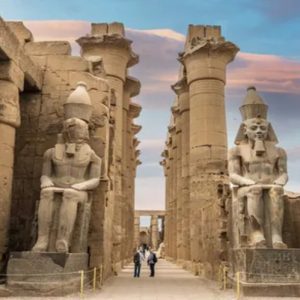
I. Introduction
II. Historical Significance
III. Religious Significance
IV. Today: A World Heritage Site
V. Exploring Adventures
VI. East Bank Tour
VII. West Bank Tour
VIII. Hot Air Balloon Ride
IX. Nile Cruise from Luxor to Aswan
X. Day Trip to Cairo
XI. Shopping in Khan El Khalili
XII. Excursion to Aswan
XIII. Climate
XIV. Conclusion
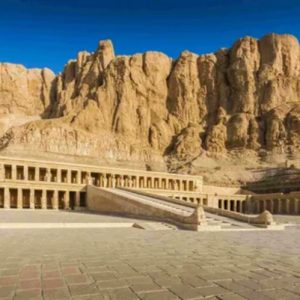
A city in southern Egypt situated on the east bank of the Nile River. The city is known for its breathtaking beauty, historical significance, and endless opportunities for adventure. In this article, we will explore the rich history and countless adventures that make it a must-visit destination for travelers.

Luxor played a crucial role in Ancient Egypt’s political, religious, and military aspects. It was considered a vital city during the Old and New Kingdoms. The city’s deep religious roots are evident, with the Karnak Temple serving as the main worship site for gods such as Amun-Re and Mut. During the 18th to 20th Dynasties, many kings and queens constructed temples to honor the gods, and Luxor became a hub for political, religious, and military activities.
III. Religious Significance

Luxor’s religious significance is evident in its temples, churches, and mosques. Karnak Temple remains the most popular worship site, and it is the largest temple complex in Egypt. Luxor Temple, on the other hand, was dedicated to the Theban Triad of Amun, Mut, and Khonsu.

The city’s rich history remains evident, with many ancient temples, churches, and mosques still standing. Luxor’s monuments were designated a UNESCO World Heritage Site in 1979, and new discoveries continue to be made every day. Luxor’s breathtaking beauty and historical significance make it a must-visit destination for travelers.
V. Exploring Adventures
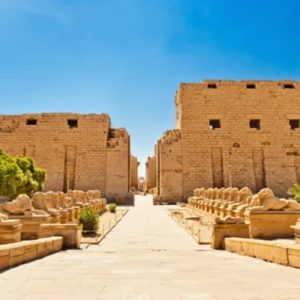
Offers endless opportunities for adventure. Visitors can take an East Bank tour, which includes a visit to Karnak Temple and Luxor Temple. Alternatively, they can take a West Bank tour, which includes the Valley of the Kings, Hatshepsut Temple, and the Colossi of Memnon. A hot air balloon ride in the morning is also a popular activity.
VI. East Bank Tour

The East Bank tour includes a visit to Karnak Temple, which is the largest temple complex in Egypt. Visitors can explore its massive pylons, obelisks, and columns. Luxor Temple, on the other hand, was dedicated to the Theban Triad of Amun, Mut, and Khonsu. It is a beautiful temple that features massive statues, towering columns, and intricate carvings.
VII. West Bank Tour

The West Bank tour includes a visit to the Valley of the Kings, where many pharaohs were buried, including Tutankhamun. Visitors can explore the many tombs and learn about the pharaohs’ lives and beliefs. The Hatshepsut Temple is another must-visit site, dedicated to the female pharaoh Hatshepsut. The Colossi of Memnon, two massive statues of Pharaoh Amenhotep III, are also located on the West Bank.
VIII. Hot Air Balloon Ride
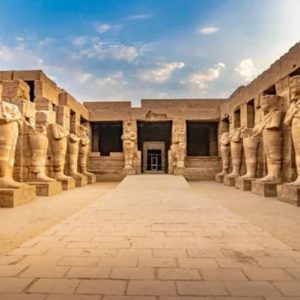
A hot air balloon ride in the morning is a popular, activity for visitors to Luxor. Rising above the city, passengers can take in breathtaking views of the Nile River, ancient temples, and monuments. Many tour operators offer hot air balloon rides, and it’s important to choose a reputable one for safety reasons. The balloon ride typically lasts for an hour, and the experience of floating over the vast landscape is truly unforgettable. Passengers can capture stunning photographs of the sunrise and the city’s iconic landmarks from above. It’s important to note that the hot air balloon ride is weather-dependent, and it may be canceled in case of high winds or other unfavorable conditions.
IX. Nile Cruise
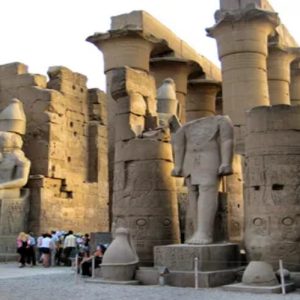
A Nile cruise is an incredible way to explore Egypt’s ancient history while enjoying the luxuries of modern amenities. Many Nile cruises start from Luxor and travel to Aswan, stopping at various sites such as Kom Ombo, Edfu, and Esna along the way. Passengers can relax on board the luxurious vessel while enjoying the views of the Nile River and the surrounding landscapes. The cruise typically includes meals, accommodation, and guided tours of the sites. Visitors can choose from a range of cruise options, from budget-friendly to high-end luxury. A Nile cruise is a unique and unforgettable way to experience the wonders of Egypt.
X. Day Trip to Cairo

For visitors who want to explore more of Egypt’s iconic sites, a day trip to Cairo is a must-do activity. The capital city is home to world-famous landmarks such as the Pyramids of Cheops, Chefren, Mykreinus, the Sphinx, and the Egyptian Museum. Visitors can take a flight from Luxor to Cairo, or travel by road or train. Once in Cairo, they can join a guided tour to explore the city’s historical and cultural attractions. Shopping in Khan El Khalili, Cairo’s famous bazaar, is also a popular activity. A day trip to Cairo from Luxor is a great way to discover more of Egypt’s fascinating history and culture.
XI. Aswan Excursion

Aswan is a beautiful city located on the Nile River, approximately 215 kilometers (133 miles) south of Luxor. Visitors can take a day trip to Aswan to explore its many attractions, including Philae Temple, the Unfinished Obelisk, the High Dam, and Abu Simbel Temples. Philae Temple is a UNESCO World Heritage Site, dedicated to the goddess Isis, and is located on an island in the Nile River. The Unfinished Obelisk is an ancient monument that was never completed and is now a popular tourist attraction.
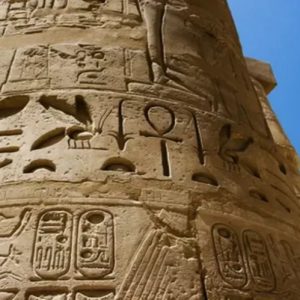
The High Dam is a modern engineering marvel, built in the 1960s to control the Nile’s floodwaters and generate hydroelectric power. Abu Simbel Temples are two massive rock-cut temples, built during the reign of Pharaoh Ramses II, and are among Egypt’s most impressive ancient monuments. A day trip to Aswan is a great way to experience Egypt’s diverse history and culture.
XII. Climate

Luxor enjoys a warm and sunny climate throughout the year, making it an ideal tourist destination. The summer months (June-August) are hot, with average temperatures of 40 degrees Celsius (104 degrees Fahrenheit), while the winter months (December-February) are mild, with average temperatures of 22 degrees Celsius (71.6 degrees Fahrenheit). Spring (March-May) and autumn (September-November) are also pleasant, with temperatures ranging from 25 to 30 degrees Celsius (77–86 degrees Fahrenheit). Visitors should be prepared for the heat and sun, and wear light clothing and sunscreen during the day. In winter, it’s recommended to bring a light jacket or sweater for the cooler evenings.
XIII. Conclusion

Luxor is a truly remarkable city that offers endless opportunities for adventure and exploration,
With its rich history and incredible collection of ancient temples, Luxor is rightly known as the “greatest open-air museum on Earth.” From the awe-inspiring Karnak Temple to the Valley of the Kings, Luxor’s historical sites are truly breathtaking.

In addition to its cultural significance, Luxor is also a hub for adventure. Visitors can take a hot air balloon ride to see the city from above or embark on a Nile cruise to explore the ancient temples and ruins along the river. With so many options, there is no shortage of things to see and do in Luxor.

Whether you are interested in ancient history, adventure, or simply soaking up the warm and sunny climate, Luxor is a must-visit destination. Its rich cultural heritage, stunning architecture, and warm and welcoming people make it an unforgettable experience for anyone who visits.